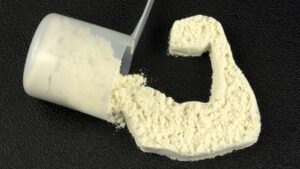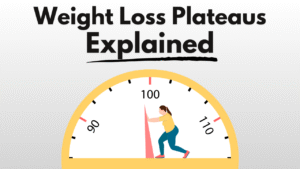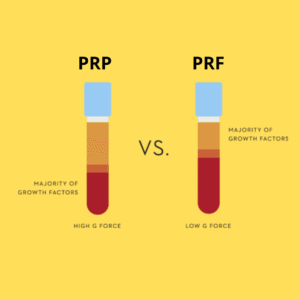Fat loss after 40 isn’t a character flaw or a mystery—it’s physiology and lifestyle colliding. Muscle naturally declines with age, recovery slows, hormones fluctuate, and busy schedules crowd out sleep and activity. The good news: a few targeted changes flip those headwinds into tailwinds. Below is a practical, evidence-based playbook built for long-term results—not crash diets.
Step 1: Reset Mindset and Pace Yourself
Quick fixes promise speed but rarely deliver permanence. Sustainable fat loss at this stage is slower—and that’s a feature, not a bug. Approach the next 8–12 weeks as a skills-building phase: consistent meals, smarter grocery habits, regular training, and better sleep hygiene. Expect the scale to move in small, steady increments while energy, mood, and waist measurements improve first. Two rules to protect momentum:
- Choose joy where you can. You’ll keep doing what you enjoy. Pick a strength plan and movement you actually like.
- Stack “small wins.” Set 14-day goals (e.g., protein at each meal, three lifts per week). Success builds identity and makes the next step easier.
Step 2: Eat for Muscle, Not Just “Weight Loss”
The target is fat loss while preserving—or rebuilding—muscle. That means adequate protein, mostly whole foods, and eating slowly enough to let fullness signals catch up.
Protein is non-negotiable
With age, muscle becomes harder to maintain. Higher protein intakes help preserve lean mass, strength, and function. Many authorities suggest older adults benefit from at least ~1.0–1.2 g of protein per kilogram of body weight daily, spread across meals; active individuals often do well with slightly more. See the PROT-AGE study group recommendations on protein for healthy aging (PubMed).
Actionable targets: build each meal around a protein anchor (e.g., eggs or Greek yogurt at breakfast; chicken, fish, lean beef, tofu/tempeh, or cottage cheese at lunch/dinner). Add a protein-forward snack if meals are small. Aim for roughly 25–40 g protein per meal, adjusted to your size and needs.
Eat mostly whole foods—at a human pace
Whole foods (protein, vegetables, fruit, legumes, minimally processed grains, nuts/seeds) make it easier to feel satisfied on fewer calories. Slow down: give each meal at least 10–20 minutes. This simple habit reduces overeating by letting gut-brain satiety signals do their job. Hydrate, and keep alcohol modest—especially late—since it disrupts sleep and recovery.
Simple plate formula
- Protein anchor: ~¼–⅓ of the plate.
- High-fiber plants: ~½ plate (vegetables, salads, beans).
- Smart carbs or fats: the remaining ~¼ (potatoes, rice, whole grains or avocado, olive oil, nuts). Adjust portions to your hunger and activity.
Step 3: Train to Keep (and Build) Muscle
Cardio supports heart health and daily energy, but resistance training is the lever that guards metabolism, posture, and independence. National guidelines recommend adults do muscle-strengthening activities at least two days per week, alongside regular moderate-to-vigorous activity. Summary here: CDC Physical Activity Basics.
Your 40+ strength blueprint
- Frequency: 2–4 lifting sessions weekly.
- Movements that matter: squat/hinge (e.g., squats, deadlifts or hip hinges), push (floor/bench or overhead), pull (rows, pulldowns), and carry (farmer’s carries).
- Progressive overload: add reps, load, or sets gradually. The goal is steady progress, not soreness for its own sake.
- Joint-friendly choices: machines or dumbbells are great if barbells bother your joints. Quality technique beats quantity.
Move more between workouts
Non-exercise movement (“NEAT”) is a quiet calorie burner and a stress regulator. Build daily walks into routines you already have—after meals, on work calls, or while listening to a podcast. If step counts help, track them; if not, just schedule 20–30 minutes of brisk walking most days.
Step 4: Sleep—Where the Magic Happens
Muscles repair, appetite hormones stabilize, and the brain clears metabolic waste during sleep. Most adults do best around 7–8 hours. Support that by dimming lights after sunset, limiting screens in the last 1–2 hours, keeping the bedroom cool and dark, and saving alcohol for earlier in the evening (or skipping it). Better sleep makes cravings quieter and training more productive.
Step 5: Manage Stress and Support the Gut–Brain Axis
High stress keeps cortisol elevated, which can nudge appetite and recovery in the wrong direction. A five-minute daily wind-down—box breathing, a short walk outside, or a few pages of journaling—pays dividends. A fiber-forward diet with fermented foods (yogurt, kefir, sauerkraut, kimchi) supports a healthier gut environment, which is increasingly tied to mood and appetite regulation. Combine that with consistent movement and sleep and you’ll feel the difference.
Step 6: Build a 14-Day “Momentum Sprint”
Short horizons make consistency easier. Try this two-week starter:
- Nutrition: protein at each meal; vegetables or fruit at every meal; eat slowly; hydrate.
- Training: three strength sessions per week (full-body or upper/lower split), plus 20–30 minutes of brisk walking on most non-lifting days.
- Sleep: consistent bedtime/wake time; dark, cool room; screens off 60+ minutes before bed.
- Check-ins: track workouts completed, average daily protein, and a few simple measures (waist, how jeans fit, energy).
After 14 days, keep what worked, adjust one friction point (e.g., pre-prep protein snacks), and repeat for another two weeks. Four to eight weeks of this approach usually yields visible and sustainable changes.
Sample Week (Adjust to Your Schedule)
| Day | Training | Nutrition Focus | Sleep Focus |
|---|---|---|---|
| Mon | Full-body strength (push, squat, row, carry) | Protein at all meals | Lights dim after dinner |
| Tue | 20–30 min brisk walk | High-fiber plants at lunch/dinner | No screens last 60 min |
| Wed | Full-body strength (hinge, press, pull, core) | Slow, mindful eating | Consistent bedtime |
| Thu | Walk + mobility (10–15 min) | Hydration + mineral-rich foods | Cool, dark bedroom |
| Fri | Full-body strength (repeat A or B) | Protein-forward dinner | Limit late alcohol |
| Sat | Longer walk or hike | Whole-food carbs around activity | Wind-down routine |
| Sun | Rest + mobility | Plan protein for the week | Early lights out |
Do You Need “1 Gram per Pound” of Protein?
FAQ
Many fitness circles suggest ~1 g per pound of body weight. That can work for highly active people who tolerate it well, but it’s not required for everyone. Evidence suggests older adults generally benefit from at least ~1.0–1.2 g/kg/day, often higher with regular resistance training (PROT-AGE, PubMed). If current intake is low, first aim for protein at each meal and consistent strength work. Increase gradually based on appetite, digestion, and progress.
How Much Cardio vs. Lifting?
FAQ
For health and weight management, combine both. National guidelines recommend 150+ minutes of moderate-intensity aerobic activity (e.g., brisk walking) per week and muscle-strengthening activities at least two days weekly (CDC). If time is tight, prioritize strength and add walking to your daily routine.
Putting It All Together
After 40, the most reliable path is simple: patient consistency. Lift 2–4 days weekly, walk most days, sleep like it matters, and build meals around protein and plants. Track behaviors, not just the scale. Four to twelve weeks from now, you’ll see measurable changes in strength, shape, energy, and confidence—and because you earned them with habits, they’ll last.
Video Summary
For more evidence-based nutrition and fitness tips, subscribe to our channel: https://www.youtube.com/@Vitality-and-Wellness
Looking for extra help with your fitness goals? Check out the personalized Nutrition Program at Parkway Athletic Club: parkwayathleticclub.com/nutrition
Disclaimer: This content is for educational purposes and does not replace personalized medical advice.



